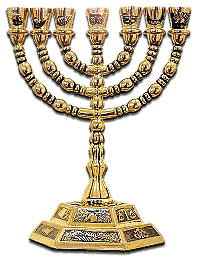Whoever it was probably lived a few thousand years ago, somewhere in East Asia — Taiwan,
Malaysia and Siberia all are likely locations.
He — or she — did nothing more remarkable than be born, live, have children and die.
Yet this was the ancestor of every person now living on Earth — the last person in history whose
family tree branches out to touch all 6.5 billion people on the planet today.
That means everybody on Earth descends from somebody who was around as recently as the reign
of Tutankhamen, maybe even during the Golden Age of ancient Greece. There's even a chance
that our last shared ancestor lived at the time of Christ.
"It's a mathematical certainty that that person existed," said science journalist Steve Olson, whose
2002 book "Mapping Human History" traces the history of the species since its origins in Africa
more than 100,000 years ago.
It is human nature to wonder about our ancestors — who they were, where they lived, what they
were like. People trace their genealogy, collect antiques and visit historical sites hoping to capture
just a glimpse of those who came before, to locate themselves in the sweep of history and position
themselves in the web of human existence. But few people realize just how intricately that web connects
them not just to people living on the planet today, but to
everyone who ever lived.
With the help of a statistician, a computer scientist and a
supercomputer, Olson has calculated just how
interconnected the human family tree is.
You would have to go back in time only 2,000 to 5,000 years — and probably on the low side of that
range — to find somebody who could count every person alive today as a descendant.
Furthermore, Olson and his colleagues have found that if you go back a little farther — about 5,000
to 7,000 years ago — everybody living today has exactly the same set of ancestors.
In other words, every person who was alive at that time is either an ancestor to all 6 billion people
living today, or their line died out and they have no remaining descendants.
That revelation is "especially startling," statistician Jotun Hein of England's Oxford University wrote
in a commentary on the research published by the journal Nature.
"Had you entered any village on Earth in around 3,000 B.C., the first person you would have met
would probably be your ancestor," Hein marveled.
It also means that all of us have ancestors of every color and creed. Every Palestinian suicide
bomber has Jews in his past. Every Sunni Muslim in Iraq is descended from at least one Shiite. And
every Klansman's family has African roots.
How can this be?
It's simple math. Every person has two parents, four grandparents and eight great-grandparents.
Keep doubling back through the generations — 16, 32, 64, 128 — and within a few hundred years
you have thousands of ancestors.
It's nothing more than exponential growth combined with the facts of life. By the 15th century you've
got a million ancestors. By the 13th you've got a billion. Sometime around the 9th century — just 40
generations ago — the number tops a trillion.
But wait. How could anybody — much less everybody — alive today have had a trillion ancestors
living during the 9th century?
The answer is, they didn't. Imagine there was a man living 1,200 years ago whose daughter was
your mother's 36th great-grandmother, and whose son was your father's 36th great-grandfather.
That would put him on two branches on your family tree, one on your mother's side and one on your
father's.
In fact, most of the people who lived 1,200 years ago appear not twice, but thousands of times on
our family trees, because there were only 200 million people on Earth back then.
Simple division — a trillion divided by 200 million — shows that on average each person back then
would appear 5,000 times on the family tree of every single individual living today.
But things are never average. Many of the people who were alive in the year 800 never had
children; they don't appear on anybody's family tree. Meanwhile, more prolific members of society
would show up many more than 5,000 times on a lot of people's trees.
Keep going back in time, and there are fewer and fewer people available to put on more and more
branches of the 6.5 billion family trees of people living today. It is mathematically inevitable that at
some point, there will be a person who appears at least once on everybody's tree.
But don't stop there; keep going back. As the number of potential ancestors dwindles and the
number of branches explodes there comes a time when every single person on Earth is an ancestor
to all of us, except the ones who never had children or whose lines eventually died out.
And it wasn't all that long ago. When you walk through an exhibit of Ancient Egyptian art from the
time of the pyramids, everything there was very likely created by one of your ancestors — every
statue, every hieroglyph, every gold necklace.
If there is a mummy lying in the center of the room, that person was almost certainly your ancestor,
too.
It means when Muslims, Jews or Christians claim to be children of Abraham, they are all bound to
be right.
"No matter the languages we speak or the color of our skin, we share ancestors who planted rice on
the banks of the Yangtze, who first domesticated horses on the steppes of the Ukraine, who hunted
giant sloths in the forests of North and South America, and who labored to build the Great Pyramid
of Khufu," Olson and his colleagues wrote in the journal Nature.
How can they be so sure?
Seven years ago one of Olson's colleagues, a Yale University statistician named Joseph Chang,
started thinking about how to estimate when the last common ancestor of everybody on Earth today
lived.
In a paper published by the journal "Advances in Applied Probability," Chang showed that there is a
mathematical relationship between the size of a population and the number of generations back to
a common ancestor.
Plugging the planet's current population into his equation, he came up with just over 32 generations,
or about 900 years.
Chang knew that answer was wrong because it relied on some common, but inaccurate,
assumptions that population geneticists often use to simplify difficult mathematical problems.
For example, his analysis pretended that Earth's population has always been what it is today. It also
assumed that individuals choose their mates randomly. And each generation had to reproduce all at
once.
Chang's calculations essentially treated the world like one big meet market where any given guy
was equally likely to pair up with any woman, whether she lived in the next village or halfway
around the world.
Chang was fully aware of the inaccuracy — people have to select their partners from the pool of
individuals they have actually met, unless they are entering into an arranged marriage.
But even then, they are much more likely to mate with partners who live nearby. And that means
that geography can't be ignored if you are going to determine the relatedness of the world's
population.
A few years later Chang was contacted by Olson, who had started thinking about the world's
interrelatedness while writing his book. They started corresponding by e-mail, and soon included in
their deliberations Douglas Rohde, a Massachusetts Institute of Technology neuroscientist and
computer expert who now works for Google.
The researchers knew they would have to account for geography to get a better picture of how the
family tree converges as it reaches deeper into the past. They decided to build a massive computer
simulation that would essentially re-enact the history of humanity as people were born, moved from
one place to another, reproduced and died.
Rohde created a program that put an initial population on a map of the world at some date in the
past, ranging from 7,000 to 20,000 years ago. Then the program allowed those initial inhabitants to
go about their business.
He allowed them to expand in number according to accepted estimates of past population growth,
but had to cap the expansion at 55 million people due to computing limitations.
Although unrealistic in some respects — 55 million is a lot less than the 6.5 billion people who
actually live on Earth today — he found through trial and error that the limitation did not significantly
change the outcome with regard to common ancestry.
The model also had to allow for migration based on what historians, anthropologists and
archaeologists know about how frequently past populations moved both within and between
continents.
Rohde, Chang and Olson chose a range of migration rates, from a low level where almost nobody
left their native home to a much higher one where up to 20 percent of the population reproduced in
a town other than the one where they were born, and one person in 400 moved to a foreign country.
Allowing very little migration, Rohde's simulation produced a date of about 5,000 B.C. for
humanity's most recent common ancestor. Assuming a higher, but still realistic, migration rate
produced a shockingly recent date of around 1 A.D.
Some people even suspect that the most recent common ancestor could have lived later than that.
"A number of people have written to me making the argument that the simulations were too
conservative," Rohde said.
Migration is the key. When a people have offspring far from their birthplaces, they essentially
introduce their entire family lines into their adopted populations, giving their immediate offspring and
all who come after them a set of ancestors from far away.
People tend to think of preindustrial societies as places where this sort of thing rarely happened,
where virtually everyone lived and died within a few miles of the place where they were born. But
history is full of examples that belie that notion.
Take Alexander the Great, who conquered every country between Greece and northern India, siring
two sons along the way by Persian mothers.
Consider Prince Abd Al-Rahman, son of a Syrian father and a Berber mother, who escaped
Damascus after the overthrow of his family's dynasty and started a new one in Spain.
The Vikings, the Mongols, and the Huns all traveled thousands of miles to burn, pillage and — most
pertinent to genealogical considerations — rape more settled populations.
More peaceful people moved around as well. During the Middle Ages, the Gypsies traveled in
stages from northern India to Europe. In the New World, the Navaho moved from western Canada
to their current home in the American Southwest. People from East Asia fanned out into the South
Pacific Islands, and Eskimos frequently traveled back and forth across the Bering Sea from Siberia
to Alaska.
"These genealogical networks, as they start spreading out they really have the ability to get virtually
everywhere," Olson said.
Though people like to think of culture, language and religion as barriers between groups, history is
full of religious conversions, intermarriages, illegitimate births and adoptions across those lines.
Some historical times and places were especially active melting pots — medieval Spain, ancient
Rome and the Egypt of the pharaohs, for example.
"And the thing is, you only need one," said Mark Humphrys, an amateur anthropologist and
professor of computer science at Dublin City University.
One ancestral link to another cultural group among your millions of forbears, and you share
ancestors with everyone in that group.
So everyone who reproduced with somebody who was born far from their own natal home — every
sailor blown off course, every young man who set off to seek his fortune, every woman who left
home with a trader from a foreign land — as long as they had children, they helped weave the tight
web of brotherhood we all share.
Source







